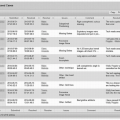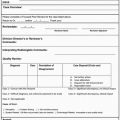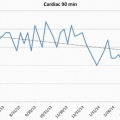Patient Satisfaction
Jeffrey P. Kanne
LEARNING OBJECTIVES
1. Describe approaches to gauging patient satisfaction in radiology
2. List specific aspects of patient experience in radiology and list specific metrics that can be used to evaluate those aspects
Consumer-driven health care has led to patient satisfaction becoming a major point of focus for health-care providers, hospitals and clinics, health-care systems, and even health insurance companies. The Institute of Medicine’s 2011 report advocates promoting patient-centered care to deliver more effective health care with fewer errors.1 In recent years, the radiology profession has made an effort to improve the public’s perception of radiology, conveying that radiologists are highly trained physicians who play a significant role in the delivery of health care.2 Furthermore, the radiology community has been advocating for more patient-centered radiology to maintain the value that radiologists add to human health.3
ASSESSING PATIENT SATISFACTION
Patient satisfaction has become a major indicator for hospitals because of the Centers for Medicare and Medicaid Services (CMS) Value-Based Purchasing Program. Beginning in October 2012, CMS instituted a 1% withhold from inpatient payments to participating hospitals, with a gradual increase to 2% by fiscal year 2017.4 The participating hospitals can recoup their withhold and can potentially earn additional incentive payments from CMS on the basis of performance rankings. Performance scores derived from clinical quality indicators and patient satisfaction metrics account for 70% and 30%, respectively. Patient satisfaction metrics include provider communication, pain management, and overall impression.
The Hospital Consumer Assessment of Healthcare Providers and Systems (HCAHPS) is used in hospitals to survey patients on their inpatient experiences and report results to CMS. In its current form, the HCAHPS survey is designed for patients to evaluate their entire inpatient experience, with focus on communication, pain control, and response times.5 Specific information for radiology departments is rather lacking. Furthermore, because radiology procedures consist of multiple steps, any of which could impact patient satisfaction, identifying specific practices affecting the patient experience can be difficult using the HCAHPS instrument.
In order for radiologists and radiology administrators to get a better sense of patient satisfaction within their own practices, well-designed survey instruments are necessary to gauge patients’ attitudes toward their experience in a radiology department (Table 3.1).6 While ready-to-use surveys are available, a customized survey will most likely provide the most benefit to an individual practice, as questions can be tailored to the specifics of a radiology department or facility.
When developing projects to improve patient satisfaction, it is best to assess metrics related to patient perception and emotion. Factors such as image quality, quality of interpretation, and health outcomes, while all important to the practice of radiology, are not relevant to the immediate experience of the patient in the radiology department.6 Rather, quality improvement projects should focus on improving patient perception.
Table 3.1 COMMON SURVEY METRICS FOR RADIOLOGY DEPARTMENTS. | ||||||||||||
|---|---|---|---|---|---|---|---|---|---|---|---|---|
| ||||||||||||
Stay updated, free articles. Join our Telegram channel

Full access? Get Clinical Tree







